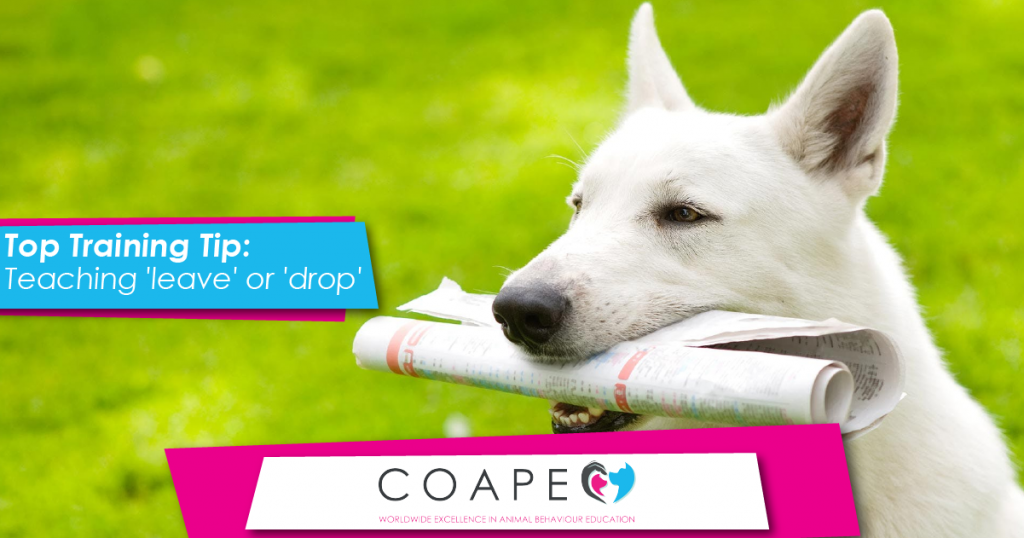Teaching your dog to “drop it” is not only for a game of fetch or tug, but for anything undesirable that your dog may pick up during the day; like a shoe, your child’s favourite teddy, or an old bone they find while out on a walk.
Teaching him to voluntarily open his mouth or let you take an object from him is a very important safety lesson, especially for the times that he may get hold of something dangerous.
Teaching “drop it” or “let’s swap” also helps to prevent him from guarding his chewies or toys from you. If you frequently exchange things he has for treats, he will learn that releasing items when you ask means good things will happen, instead of him learning that he loses what he was having fun with.
It only takes a few minutes to teach most dogs the release cue “drop it.” Of course, some dogs can become easily distracted or be reluctant to participate in training this exercise, so be patient and always make sure that you work at a pace that does not put pressure on your dog. The idea behind this training method is to basically offer your dog a trade: “let go of the object in your mouth, and something good will happen.”
How To Train “Drop it”
1. Offer your dog one of his toys (not his favourite one), saying, “take it.”
2. If your dog is highly excited to see the toy, you might want to let him have a minute or so to play before you start training. Just do not wait so long that he gets bored with the toy.
3. While the toy is in your dog’s mouth, hold a yummie treat up to his nose.
4. As soon as your dog releases the toy, pick it up and give him the treat.
5. Repeat steps 1 through 4 several times until you feel your dog is responding well.
6. Now, add the verbal cue, such as “drop it.” Say the cue as soon as you present the treat. Try to time it so that you say “drop it” as he smells the treat. Repeat this until your dog does it successfully 4 out of 5 times.
7. Now you’re going to increase the value of the item your dog needs to drop, so you can now give him his favourite toy, and repeat the process. You are slowly teaching him that even his favourite things aren’t bad to give up because he gets rewarded for it.
8. Once your dog is willing to give up a high value item (i.e. his favourite toy), try holding the treat further away when you give the cue. Gradually increase the distance if he still responds to the verbal cue. Remember to always go at your dog’s pace. If you see he isn’t successful, go back to the previous step and keep practising until he is ready to move to the next step.
9. Then, try the cue without the treat, praising your dog if he complies.
Tips
• If your dog becomes overly excited or fixates on the treats, take a break and restart the training session at a later time with a lower value treat, or after a small meal.
• If your dog does not let go of the toy when the treat is presented, try wiggling the treat or improving the value of the treat.
• For dogs that like to run away the moment they have a toy, try teaching this indoors in the kitchen or lounge.
• Other one or two-word cues can be used like “give” or “release.” You might want to avoid “Let go,” it may be confused with “Let’s go.”





